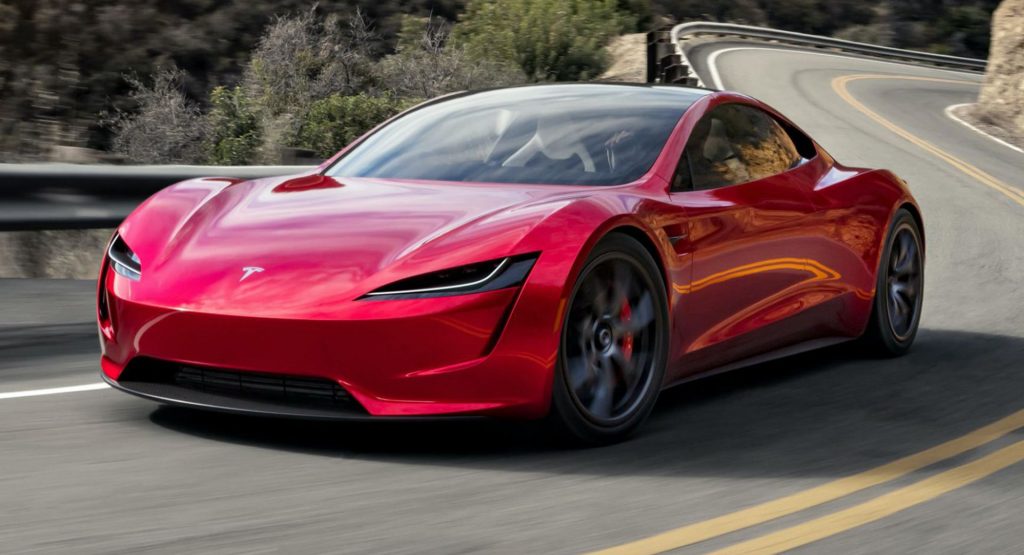Elon Musk likes to make bold proclamations and in January 2019, he wildly claimed that the second-generation Tesla Roadster would use rocket thrusters. While that may have initially seemed like a fantasy, Musk is said to be very serious about using rockets to improve the Roadster’s performance and Jason from Engineering Explained recently set out to discover how this could work.
The system will work as follows. Tesla’s optional ‘SpaceX’ package for the Roadster will see the rear seats removed and replaced by a composite overwrapped pressure vessel (COPV). The car’s battery will power a pump which in turn runs the COPV that can then send pressure to cold gas thrusters located around the vehicle. Musk says the car will use roughly 10 of these thrusters.
Read Also: Musk Says Tesla Roadster Will Be Delayed Until After The Cybertruck’s Launch
The use of these cold gas thrusters could have profound impacts on the car’s performance. In a straight-line, it is possible the Roadster with the available SpaceX package will be able to hit 60 mph (96 km/h) in 1.1 seconds. Braking performance could also be improved with a 60-0 mph braking time of as little as 45 feet (14 meters). There is a big caveat to the system, however.
Storing all of this ‘boost’ in the Roadster will add weight and Jason believes the boost may only last for 1 or 2 seconds at a time as having any more than that would simply add too much weight to the car. Consequently, it is unlikely the system will provide any sustained or meaningful improvements to cornering because you wouldn’t want the rocket thrusters to run out of puff halfway through a corner.



